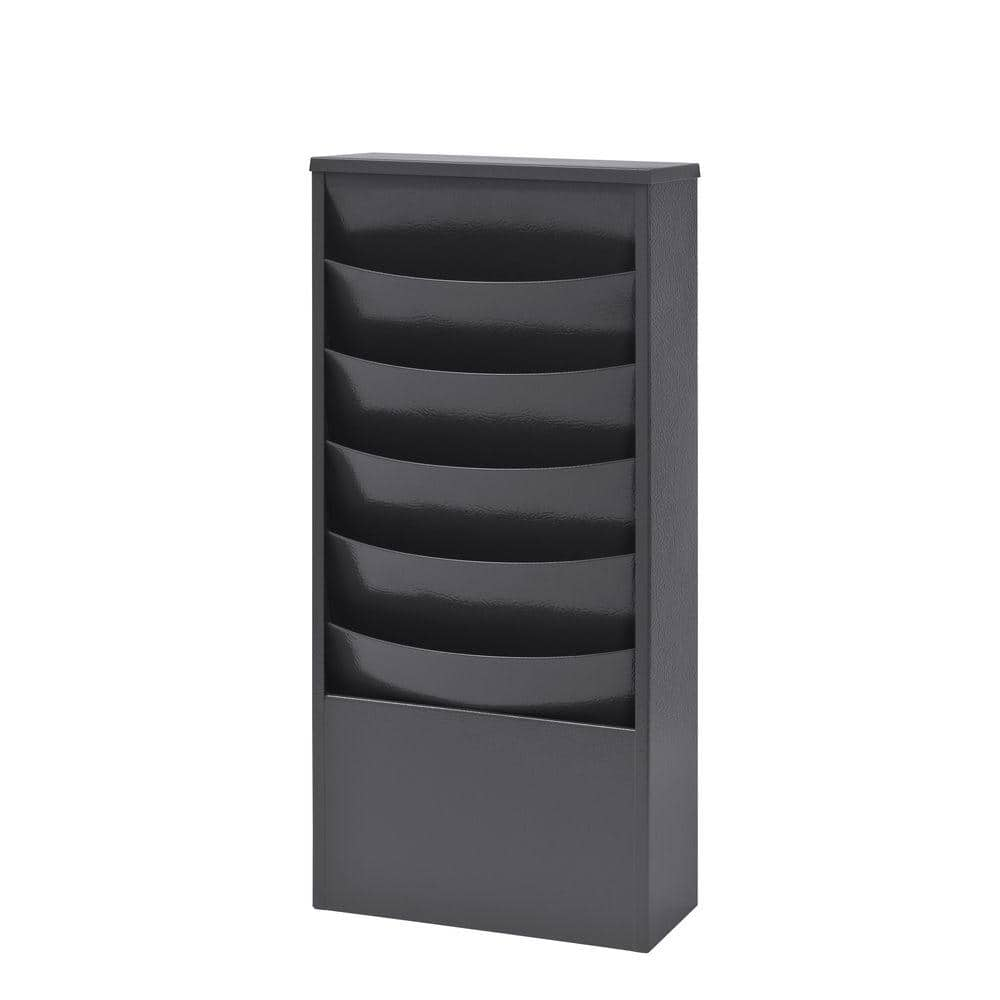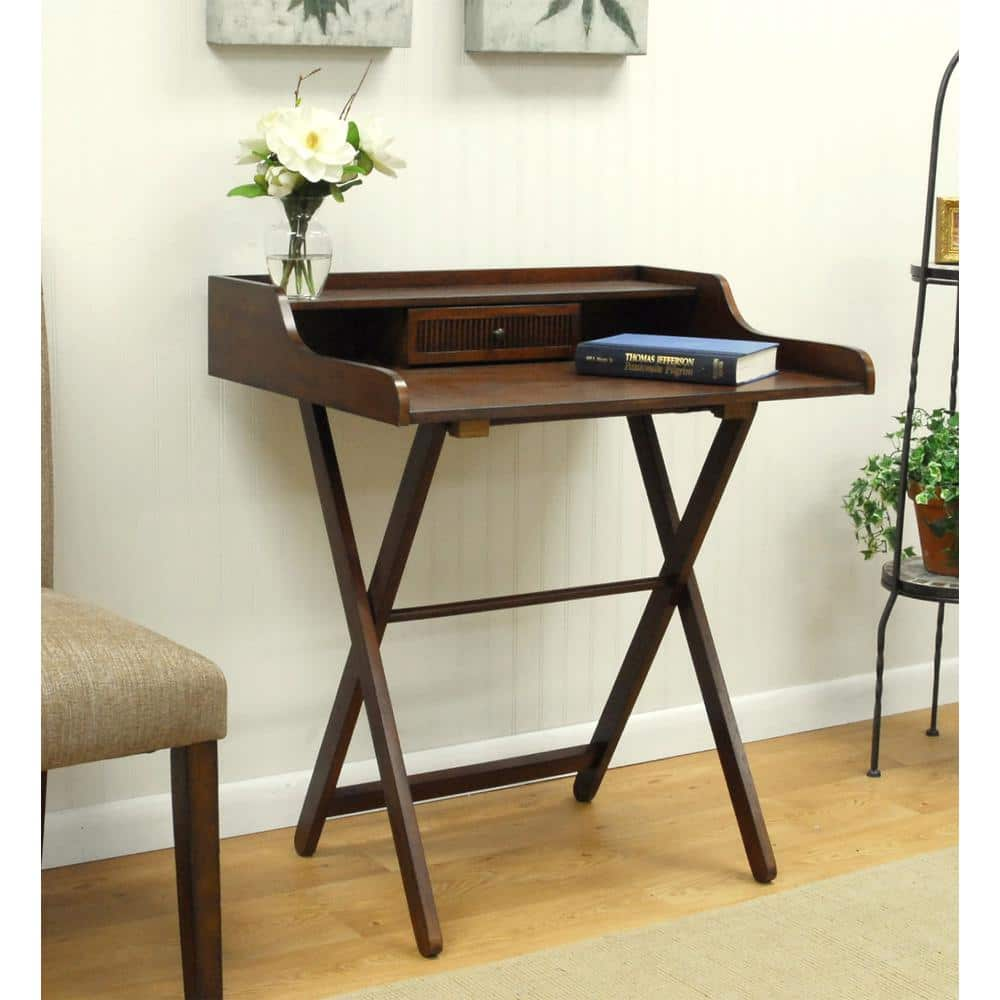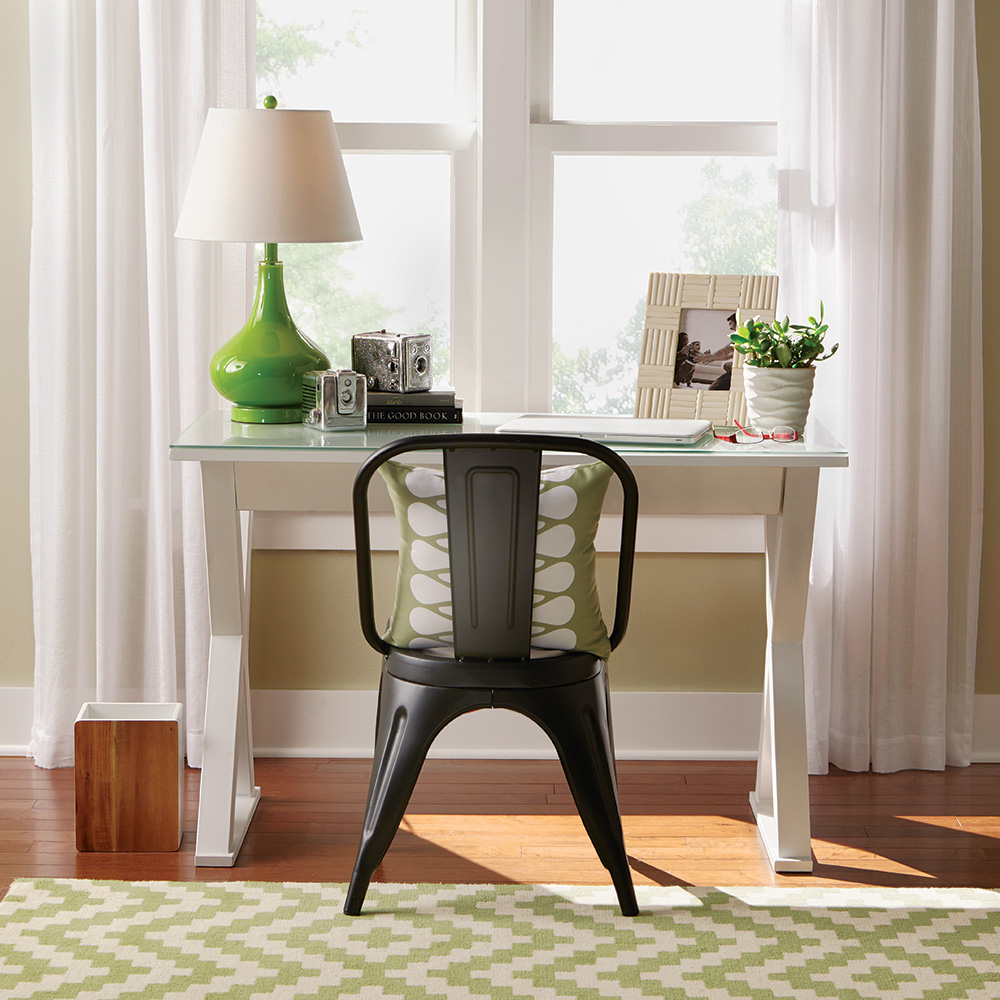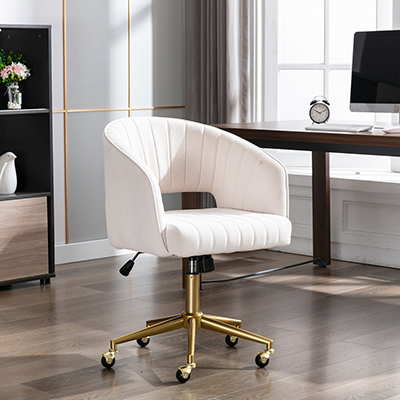How to Create a Productive Home Workspace

Last updated September 7, 2023
Your work area can have a big impact on the quality of your work. The right space can help you stay focused and comfortable through every task, so it’s important to plan your at-home work area carefully. Fortunately, creating a spot that’s right for work is simple when you know what goes into a great work area. This guide will teach you how to create a productive home workspace.
Table of Contents
Choose a Location
Make Space
Grab a Seat
Shine a Light
Get Organized
Get Comfortable
Choose a Location
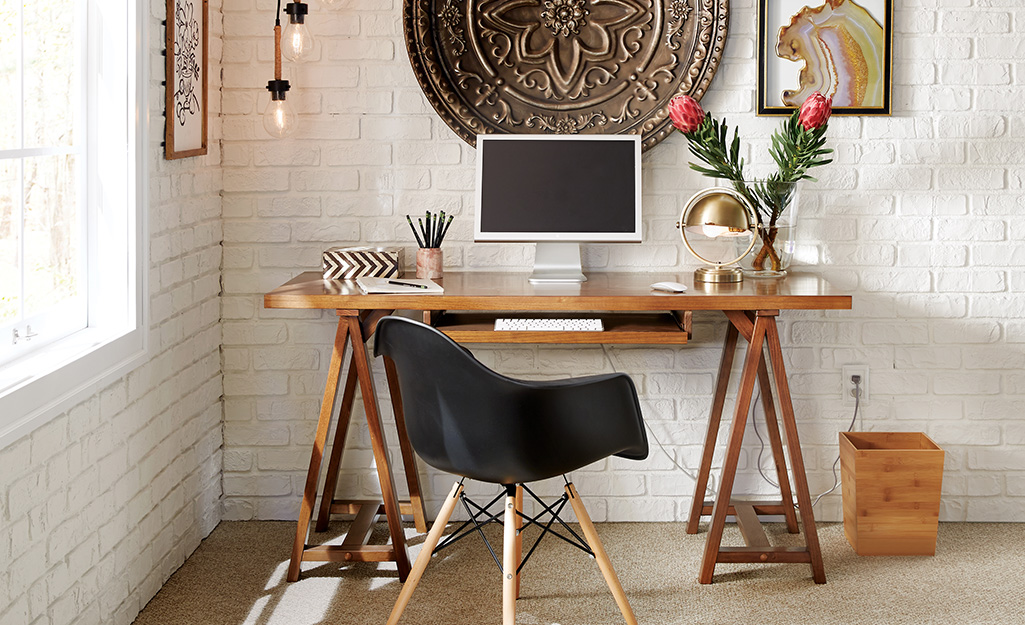
The first step to creating a productive home workspace is to pick the right location. An area that is away from the main flow of traffic through the home is best for keeping distraction to a minimum. Choose an area with good air circulation; near a window is a good spot to work, but be aware of anything outside that might cause a noise issue, especially if your work requires heavy phone use. Be sure to measure your office furniture before moving it into the new location.
For most people creating a home work space, location of electrical outlets is also an issue. If you have to power a number of devices, as well as a light source and possibly other desk accessories, you might want to scope out a space that will easily reach more than one outlet, or empty the use of a power strip with multiple inputs. However, take care not to overload any one outlet with more plugs than it is rated to handle.
One last thing to consider in your location is the strength of your Wi-Fi signal which can vary in different rooms of your home. If your work relies heavily on internet use, try using your phone or other device to test areas of the home and figure out where your signal is strongest, then try to find a good spot in that area to set up your work space.
Make Space
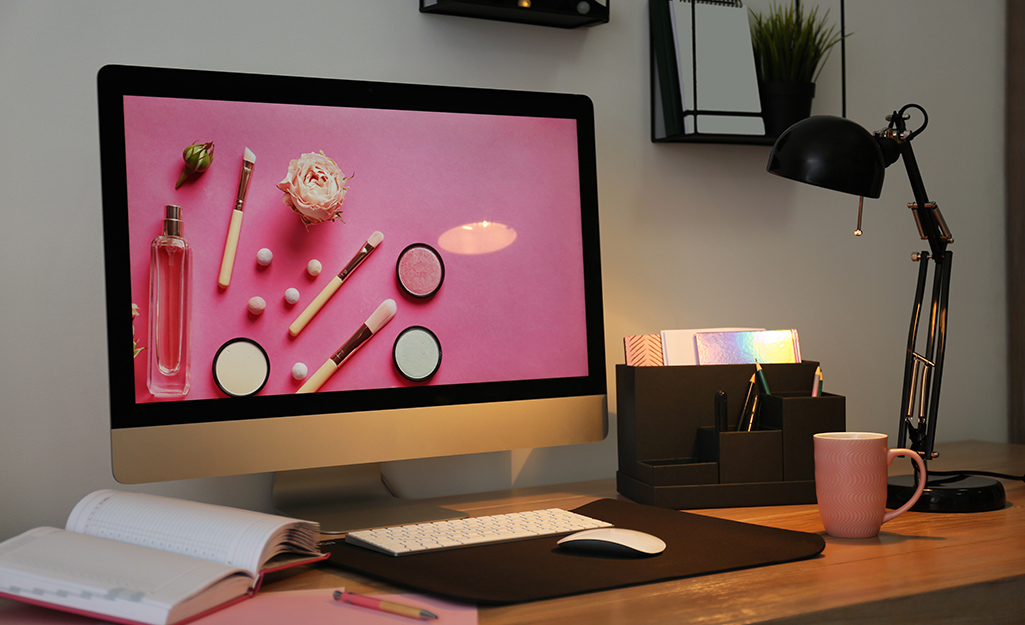
Ideally, you will have a desk at home to use for a work surface, but you aren’t limited to a traditional desk. A kitchen table or counter can serve as a home workspace, as long as you have the correct height of seating to pair with it. A sturdy folding table makes an excellent desk and has the advantage of being portable and easy to set up in any area of your home. If you’re only working with a single laptop or small amounts of paperwork at a time, a lap desk can turn any area where there is seating into a viable workspace.
For people who prefer to stand while working, adding a small side table to the top or your work surface can give you a higher surface to work from. Other common household objects can make a creative standing workspace as well. An ironing board can be raised to a comfortable height for standing and later lowered to accommodate a chair.
Grab a Seat
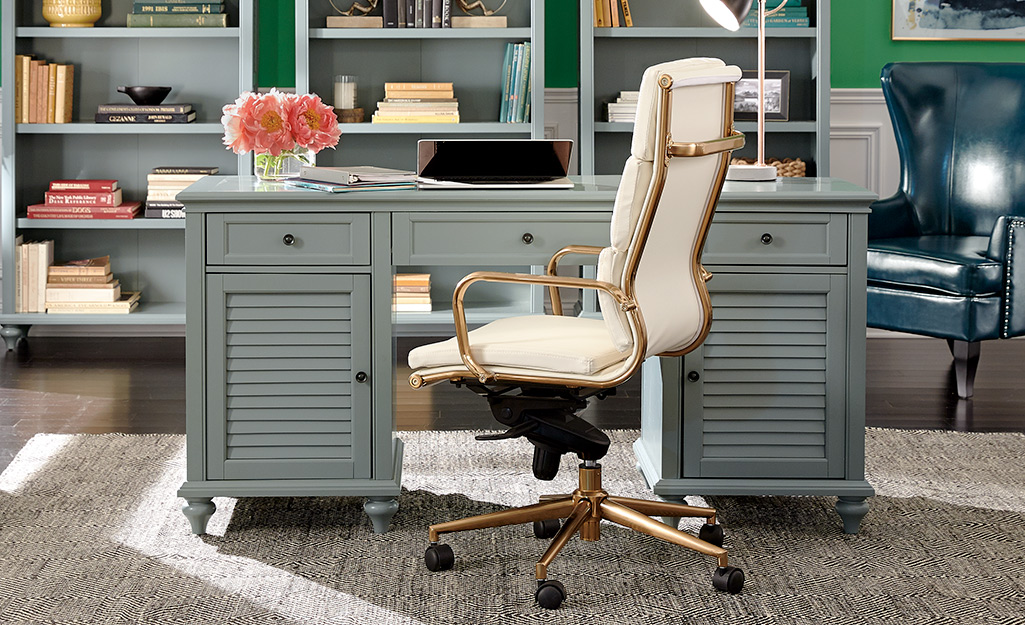
It’s important to place the right seating in your workspace. Aim for a firm, supportive office chair that allows you to sit upright, and doesn’t hamper your arm movements. Looking for something a bit more stylish? A dining room chair often makes excellent office seating. Add pillows or cushions to the seating to make yourself more comfortable and provide lumbar support. Place a small stool or box under the seat that can be employed as a footrest when needed.
Don’t forget to stand and stretch or move around the space periodically to loosen up and keep yourself motivated.
Shine a Light
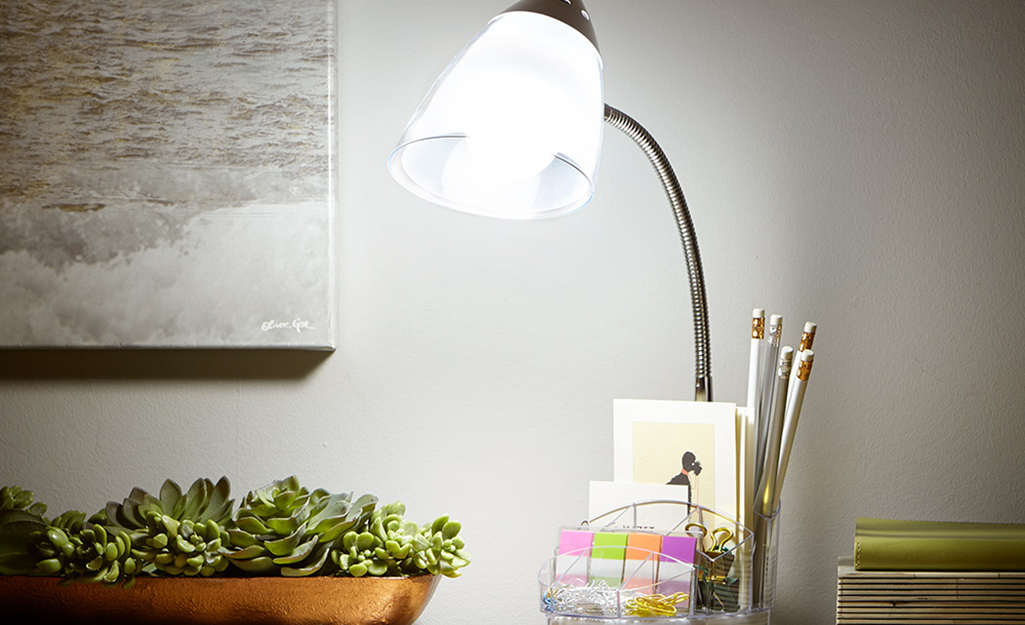
Make sure your workspace is equipped with sufficient light. Having adequate lighting will reduce eye strain and fatigue as you work. Setting up your desk near a source of natural light will help keep you feeling energized; track how the sun is hitting your desktop over the course of the day and make adjustments that will minimize glare on your computer screen.
Increase the amount of natural light or replace it entirely with a desk lamp or floor lamp in your workspace. Try to aim the light source so that it throws light over the desk and your work area without casting too many shadows from your position in the desk chair.
Get Organized
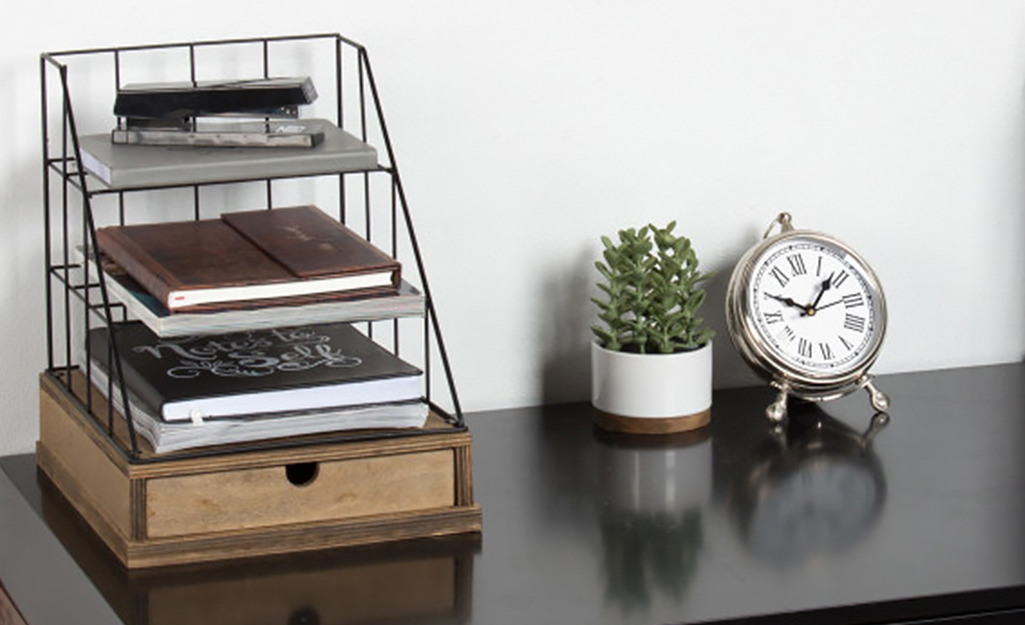
Bring a few desk accessories into your workspace at home to keep everything organized and handy. If desktop space is limited, try a stackable set of organizers that can hold a lot in one small footprint. If you have wall space nearby, a hanging file sorter is ideal for keeping you organized and your desktop empty. A pen cup to keep markers, pens and pencils near at hand can be similarly mounted on a wall. There are even types that attach to a table edge to keep them off the desktop.
Get Comfortable
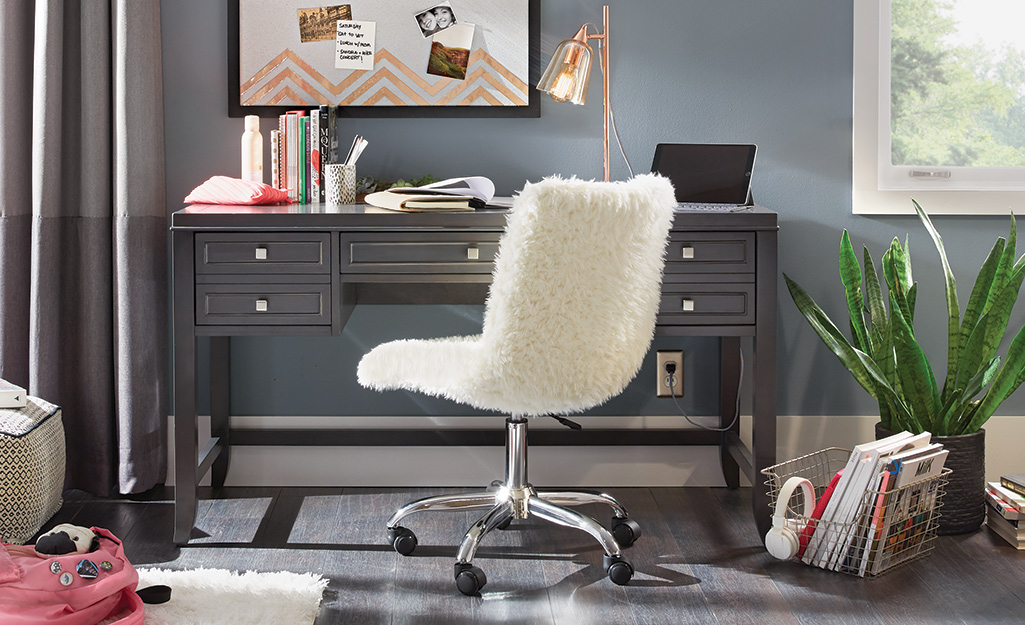
Make your home workspace more inviting and comfortable by adding cushions and texture. Adding a chair pad to a desk chair can make it more comfortable, allowing you to be more productive. A soft throw over a chair or a thick area rug underfoot makes your workspace feel warmer and more welcoming.
Multi Use Spaces
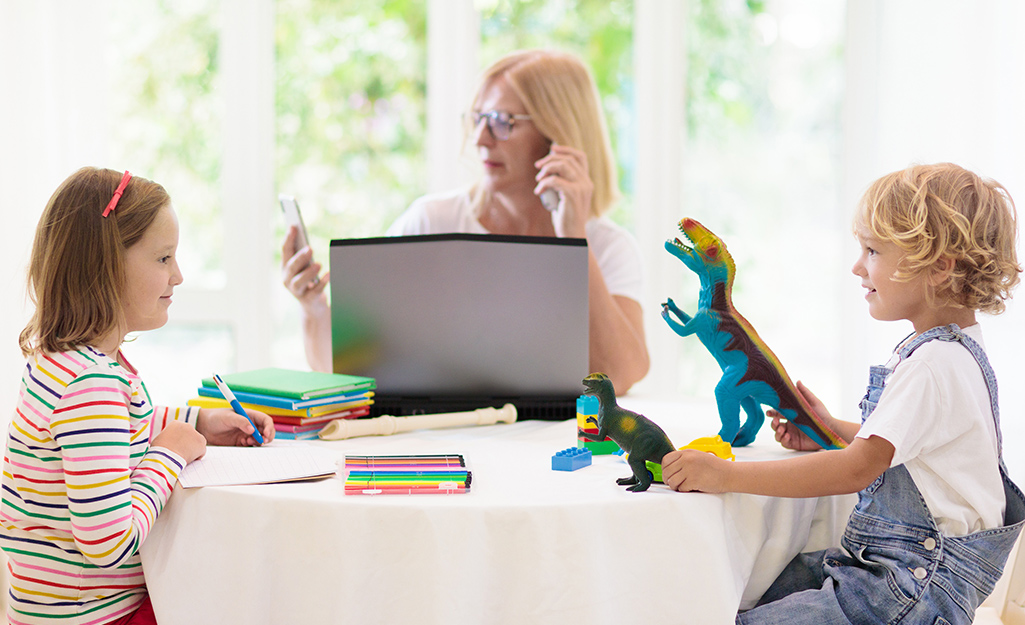
Home workspace must sometimes be shared or used for dual purposes. If you have a large table, you can set up two individual workspaces, placing one at either end of the table. This allows for enough elbow room so no one feels too crowded. Another alternative is to set up two smaller work areas in the same room, but position them so they face away from one another to minimize distractions.
A workspace might need to have an area for children to play or work on learning activities that require more supervision. Set up your work area facing outward toward the room to supervise play while you work, allowing more open space in the center of the room for the children’s activities. You can spread out an activity mat or a quilt to contain their fun and make it easier to clean up at the end of the day.
Desk Alternatives
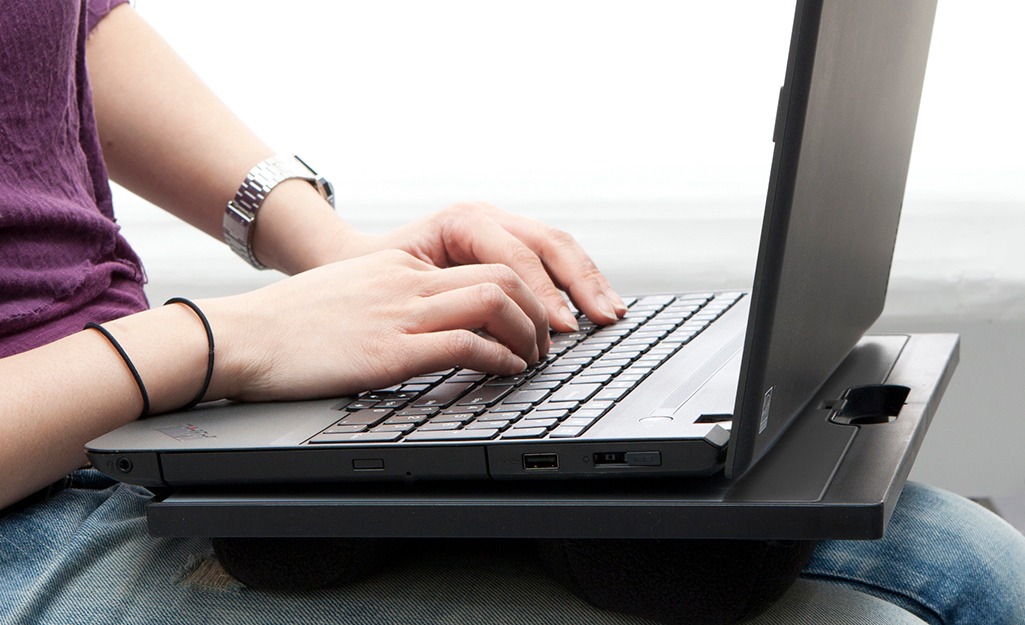
Sometimes a quick change of scene can help you feel more productive during the work day. Employ a lap desk and move your work day to a patio or porch for an hour to get some fresh air and sun or simply move to a chair or couch near a window. In a pinch, a breakfast tray with legs and flat surface can also be used as a portable work station.
Finishing Touches
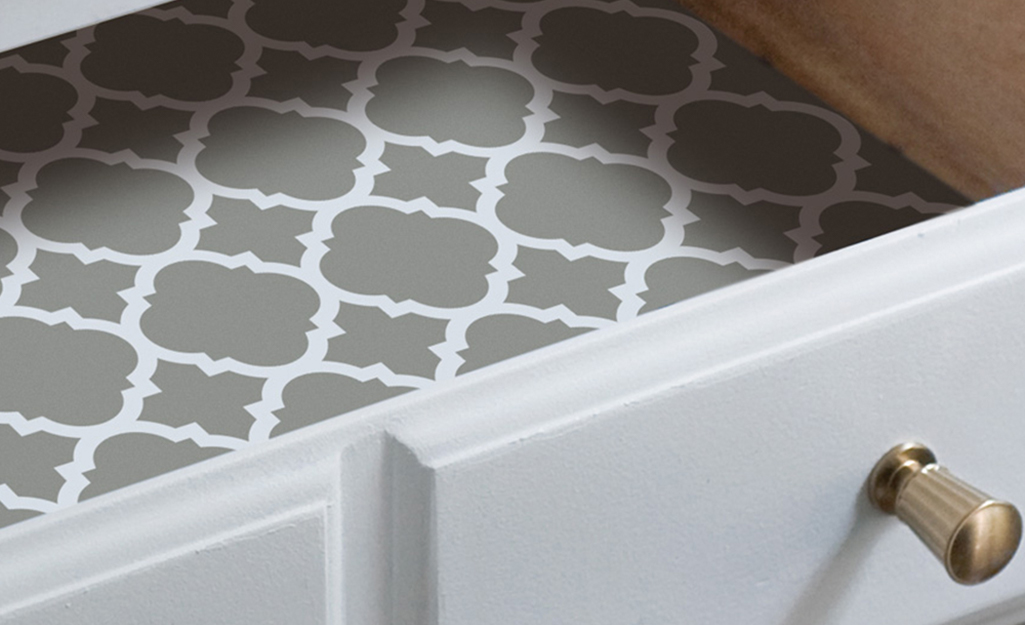
Injecting small spots of color and personality into your work area can energize the space and provide some cheer. Try lining a drawer with decorative adhesive contact paper, shelf liners or a colorful wrapping paper. Relocate a piece of art or a poster you enjoy to a wall, shelf or even the floor near your work area, making sure it’s in your eye-line when seated.
It's a Date
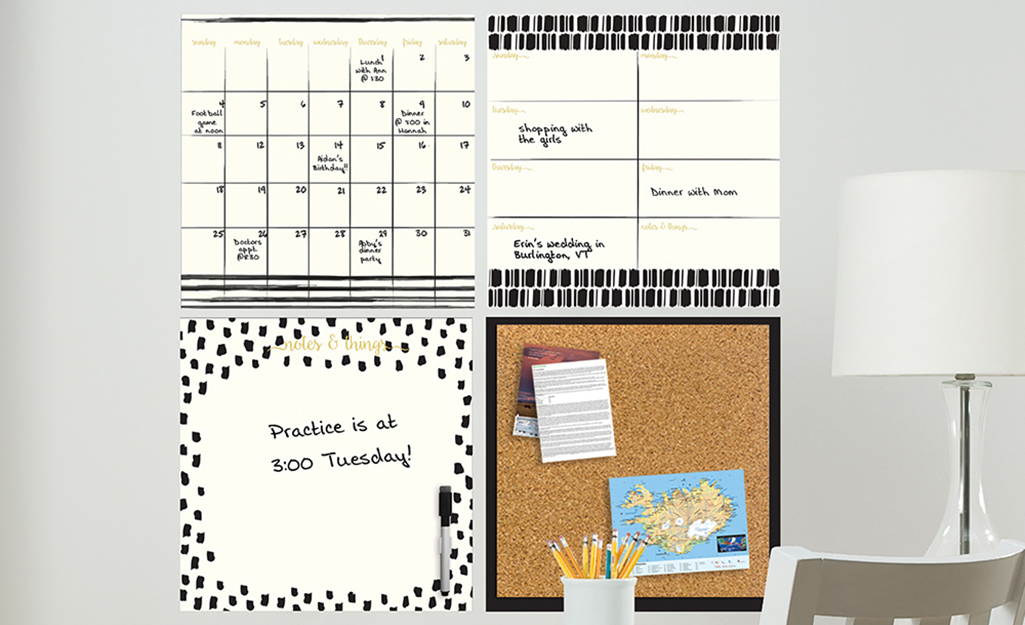
Hang a large calendar on a wall near your workspace to help keep track of daily appointments and important meetings. Digital reminders are valuable, but having the date and day’s important activities visible at a glance will help keep you on track. Try using a dry-erase type with a section for notes and it can do double-duty as a space for quick personal reminders as well.
A Hint of Green
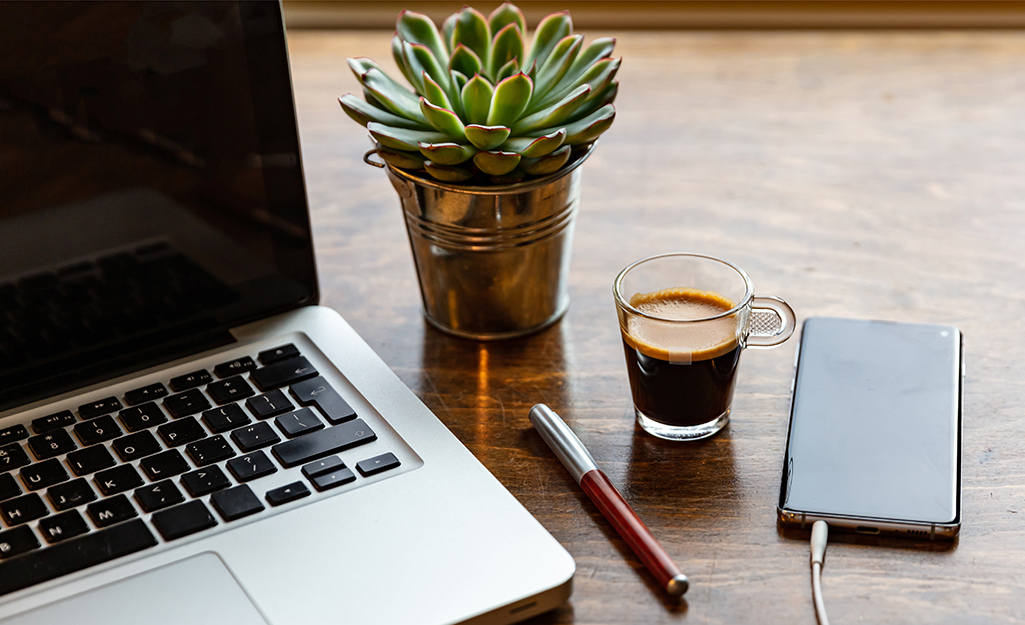
A splash of green from a lush houseplant will beautify your desk and bring a little bit of nature into your work day. Houseplants also add moisture to household air and work to trap and absorb up to 87 percent of volatile organic compounds found in ordinary household items such as cleaning products and carpet.
Relocate a small plant from a different area of your home to your work space, or choose a new green friend from online. Most popular house plants are fairly adaptable, but choose one suitable to the light conditions you have in your work area to let your plant live its best life.
Now that you know how to create a productive home workspace, you can start creating your home office. Pick your location and make a list of whatever you need to fill and organize it. Then, shop at The Home Depot for office furniture, desk organizers, decorative accents and whatever else you need for the space. The Home Depot delivers online orders when and where you need them.
